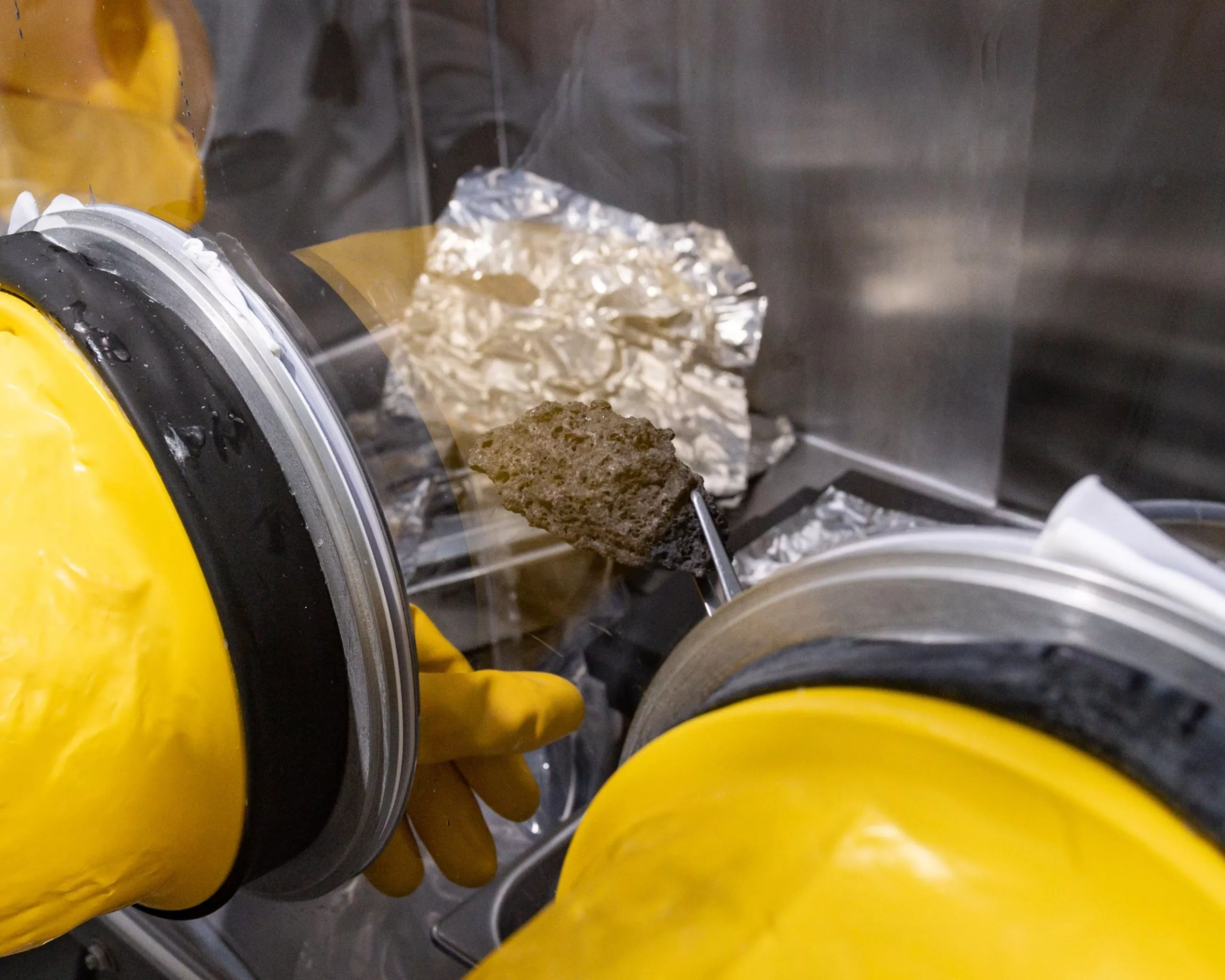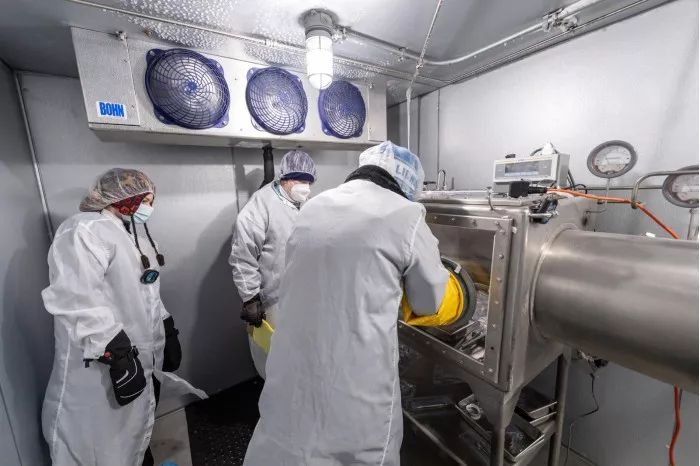Scientists at NASA's Goddard Space Flight Center in Greenbelt, Maryland, recently received samples of the lunar surface It is understood that since the Apollo 17 astronauts were returned to earth in December 1972, these samples have been carefully stored in a freezer at NASA Johnson Space Center in Houston.
This research is part of the Apollo next generation sample analysis program (angsa). This is an effort to study samples returned from the Apollo program in advance of the upcoming Artemis mission to the moon's south pole.
However, the process of sending samples from Johnson to Goddard - and researchers at NASA Ames Research Center in Silicon Valley, California, the Naval Research Laboratory in Washington, D.C., and the University of Arizona in Tucson - is much more difficult than you think. It was a process that began more than four years ago, when NASA's Julie Mitchell and her Artemis curator team in Johnson began designing and modifying a facility to handle frozen Apollo 17 samples. This is a new method, and scientists are excited about adopting a technology that can be applied to future lunar missions.
"We started this work in early 2018, and we need to face many technical challenges, which we must overcome in order to get to this step. This is seen as a practice of preparing facilities for future cold sample processing," Mitchell said.
Later, she added: "by doing this work, we have promoted not only the exploration of Artemis, but also the return of future samples and human exploration of other parts of the solar system. I am very honored to contribute by developing the ability to collect these materials for us, so as to take them home safely and preserve them for a long time."
When the facility is ready, Ryan Zeigler, Apollo sample curator of Johnson's Department of astromaterials research and exploration Sciences (Ares), and his team must adapt to the unique conditions designed by Mitchell's team to keep the samples frozen during processing, including the reduction of visibility caused by frost and the challenge of handling samples with thick gloves in a nitrogen purification glove box, All this happens in a walk-in freezer that stays at minus 4 degrees Fahrenheit (minus 20 degrees Celsius). When astronauts may return ice samples from the south pole of the moon, it is very important for Artemis to keep the samples frozen.
"Everything we do involves a lot of logistics and a lot of infrastructure, and it's even more difficult with the cold," Zeigler said. "This is an important learning course for Artemis, because being able to handle samples in the cold is even more important for Artemis mission than Apollo. This work provides us with some lessons and good feedback for Artemis."
Once frozen samples have been processed and subdivided by Lunar Sample handler Jeremy Kent in Johnson, they are shipped fast in a cooler with dry ice, opened immediately in Goddard and stored in a safe freezer. For scientists now dealing with these treasures, there is something special about receiving samples that have not been investigated in nearly 50 years.
Jamie elsila is a research scientist at Goddard astrobiological analysis laboratory. Her research and analysis of samples focus on small, volatile organic compounds. Previous studies have shown that some lunar samples contain amino acids, which are necessary for life on earth. Her team wants to know their origin and distribution in the solar system.
"We believe that some amino acids in lunar soil may be formed by precursor molecules, which are smaller and more volatile compounds such as formaldehyde or hydrogen cyanide," elsila said. "Our research goal is to identify and quantify these small volatile organic compounds and any amino acids, and use these data to understand the moon's pre biological organic chemistry."
Natalie Curran, chief investigator of the mid Atlantic Nobel gas research laboratory in Goddard, is mainly responsible for understanding the history that the sample may experience during its existence on the moon. The surface of the moon is a harsh environment. Unlike the earth, it does not have an atmosphere to protect it from exposure to space.
"Our work enables us to use inert gases such as argon, helium, neon and xenon to measure the exposure time of the sample to cosmic rays, which can help us understand the history of the sample. Since cosmic rays may damage the organic matter in the sample, understanding the duration can help determine the impact of exposure to organic matter," Curran said.
Elsila and Curran both have frozen and non frozen lunar samples. When these samples are brought to earth, some are stored at room temperature and the other is frozen, making it easy to compare between the two groups. Scientists will analyze the two groups of samples to determine whether there is a difference in organic content. Understanding any changes caused by different preservation methods may provide information for future decisions on how to store samples returned by Artemis astronauts, which is part of what Johnson's Ares team will do.
"It's cool to think about all the work of collecting samples on the moon and all the careful consideration and care to preserve them so that we can analyze them at this time," elsila said
Curran said: "it always shocks me when you think about how these samples come from another world, how much they have gone and the history of the solar system preserved in them."


